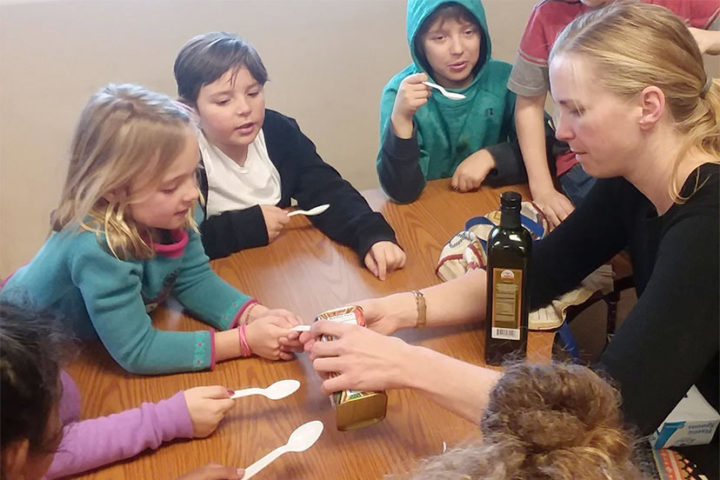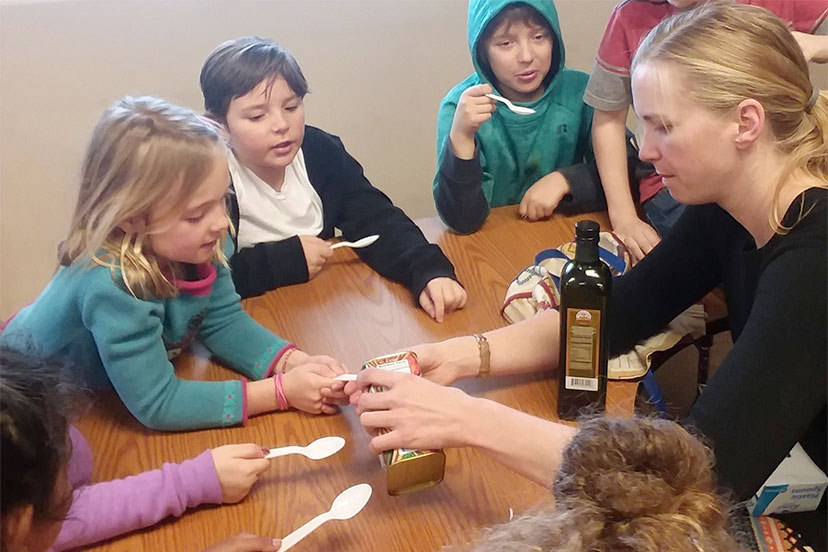A few days ago, a friend sent me a link to a Forbes Magazine article by Mark C. Perna, titled, “Why Education Is About To Reach A Crisis Of Epic Proportions.”
(‘1 of 4 Free Articles’, in my case.)
For the seven of us who serve on the board of directors for the Pagosa Peak Open School, this type of media headline can easily generate anxiety. Our goal, for the past five years since PPOS opened its doors, has been ‘the best possible education’ for our students — and so many recent changes have challenged our ideas about what, exactly, is ‘possible’.

(Disclosure: I serve on the PPOS charter school board of directors, but this editorial series reflects my personal opinions and not necessarily those of the board as a whole.)
Here are the first three sentences in Mr. Perna’s Forbes article:
We’re at a major tipping point in education. According to a recent survey, 48% of teachers admitted that they had considered quitting within the last 30 days. Of that number, 34% said they were thinking about leaving the profession entirely.
Understaffing has plagued schools for years, but it’s now reaching epic proportions…
When a news story begins with a statistic like “48% of some group”, I like to understand where the number came from, because — as we all know — 72% of all all statistics are made-up numbers. (Including that number.)
Turns out, Mr. Perna’s number came from a survey conducted by ‘TeachersPayTeachers.com’ — a commercial website that sells worksheets, lesson plans and activity outlines developed by teachers, for teachers. “TpT” did not share their survey methodology online, so we don’t know how the questions were phrased, nor do we know which group of educators were surveyed.
But, as a school board member, I’m probably driven to think more deeply about this “Crisis of Epic Proportions” than Mr. Perna and Forbes Magazine may have expected from a typical reader.
For reasons that are not completely clear, the U.S. appears to be in the midst of a ‘Great Resignation’, with employees leaving jobs in record numbers. The number of unfilled job openings in the U.S. as a whole currently sits at about 10.6 million (US Bureau of Labor Statistics) — up from about 7.1 million a year ago, but down slightly from the October 2021 high of 11.1 million.
The 48% of teachers identified in the TeachersPayTeachers survey, who are “considering a job related change” within the past 30 days is actually a fairly consistent percentage across most U.S. industries, as reported in other national surveys.
We can ask ourselves, however: ‘What employee makes it through an entire month, without thinking about quitting that job, at some point or another?’ Who, in fact, doesn’t thoughtfully assess each of their most important relationships… at least once a month?
And of course, ‘considering a change’ doesn’t necessarily result in ‘making a change’. Here in Archuleta County, the typical turnover rate for public school teachers — before the arrival of the COVID difficulties — was around 18% (Colorado Department of Education). That’s far below the national turnover rate in certain other industries… such as:
Retail trade
2006 Turnover Rate, 53%… 2020 Turnover Rate, 69%
Construction
2006 Turnover Rate, 58%… 2020 Turnover Rate, 68%
Leisure & hospitality
2006 Turnover Rate, 75%… 2020 Turnover Rate, 130%
Accommodation and food services
2006 Turnover Rate, 74%… 2020 Turnover Rate, 130%
In the education industry nationally, three types of employees have become particularly scarce since the arrival of the COVID pandemic. Bus drivers. School nurses. And substitute teachers.
Pagosa Peak Open School has never been served by the Archuleta School District bus system… so for the past five years, kids have been dropped off and picked up by parents and guardians. But like many other schools and districts, PPOS has faced an ongoing challenge securing enough substitute teachers.
Traditionally, teacher substitutes have been on-call hourly workers with at least a bachelor’s degree, and preferably some kind of previous teaching experience. That can be a challenge in a tourism-based town like Pagosa Springs, where a college education is fairly common among the older, retired demographic but less common among younger workers.
Things are no longer functioning the way they traditionally did, in some ways. To help districts meet the substitute challenge, the Colorado Department of Education recently revised its requirements for their one-year substitute license. Previously, districts wanting to hire someone with a high school diploma, but lacking a college degree, needed to include a ‘verification form’ for that person… basically stating, ‘The district is going to sponsor this person; they will work only here in the local district, and we’re going to help them develop their skills and coach them through.’
During the pandemic, CDE changed requirements so that ‘verification’ is no longer needed… and that has opened the door, potentially, to a wave of new candidates, including district paraprofessionals who don’t have that ‘college degree’ but who may be familiar with the school culture and classroom management processes. Additional funding from the state has also given districts more opportunity to advertise those openings and in some cases, increase pay. You can learn more about the state’s requirements to obtain a substitute license by visiting cde.state.co.us
Finding enough workers has been one problem challenging our schools, nationally. Finding enough students is yet another.
Through the peaks and valleys of the two-year COVID crisis — the school closures, the mask mandates, the struggles with ‘distance learning’ — many schools and districts have seen their enrollments drop off. Both Archuleta School District and PPOS are serving fewer students, in 2022, than their projections had predicted.
Now, just as a ‘new variant’ virus sweeps through Colorado and the U.S., the ASD Board of Education has approved a five-year expansion plan for PPOS, suggesting potential enrollment growth at the K-8 charter school from 120 students to 225 students by 2027.
Would such a development provide “the best possible education for our children”?

